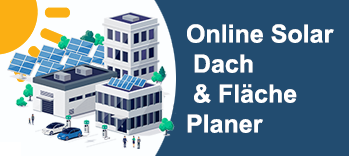EU strategies to reduce China dependence versus US approaches: Between resilience and protectionism
Xpert pre-release
Language selection 📢
Published on: October 15, 2025 / Updated on: October 15, 2025 – Author: Konrad Wolfenstein

EU strategies to reduce dependence on China versus US approaches: Between resilience and protectionism – Image: Xpert.Digital
De-risking or decoupling? Away from China: Europe's soft course – or do we need to copy the US?
A continental attempt at liberation: Can EU companies follow the American example or does Europe need a different path?
The geopolitical reality of the 21st century presents both the US and the EU with a common problem: economic dependence on China. While both economic powers pursue similar goals—reducing strategic vulnerabilities and strengthening their own economic base—their approaches differ fundamentally in methodology, scope, and philosophical orientation. This comprehensive comparative analysis examines two fundamentally different strategies for addressing one of the greatest economic policy challenges of our time.
Suitable for:
The Transatlantic Divide: Two Continents, Two Philosophies
The fundamental commonality between the US and the EU lies in the recognition that the previous globalization strategy has led to one-sided dependencies that pose both economic and security risks. Both economic areas have recognized in recent years that China's state capitalist system and its increasingly assertive foreign policy require a strategic realignment. Both pursue the overarching goal of making their economies more resilient and securing critical technologies and supply chains.
The overlaps are evident in several areas: Both are focusing on diversifying supply chains, strengthening domestic production capacities in critical sectors, and developing alternative trade partnerships. Both the US and the EU have launched extensive programs to promote strategic industries – the American CHIPS Act has its European counterpart in the European Chips Act. Both recognize the importance of research and development for long-term competitiveness and are investing heavily in future technologies.
Nevertheless, initial differences are already apparent in the analysis of the problem. While the US primarily views China as a systemic rival and potential military threat, the EU continues to view the People's Republic as a complex partner that is simultaneously a competitor and a systemic rival. These differing threat perceptions fundamentally shape their respective strategies.
US strategies: The three-pronged liberation strike
The American response to China dependence is manifested in a coherent, three-pronged approach that relies on massive government intervention. At its core is a combination of nearshoring, reshoring, and friendshoring, underpinned by unprecedented investments in domestic industry.
Suitable for:
Nearshoring
focuses on relocating production capacity to geographically close countries, especially Mexico. Between January 2023 and August 2024, over 400 investment projects with a total volume of $170 billion were announced. This strategy leverages existing trade agreements such as the USMCA and benefits from lower transportation costs and cultural proximity.
Reshoring
aims to relocate strategically important industries back to the United States itself. The $280 billion CHIPS and Science Act aims to increase semiconductor production in the United States fivefold. Similar programs exist for battery technology, rare earth elements, and other critical materials. This strategy deliberately accepts higher costs in favor of complete control over strategic production capacities.
Friendshoring
establishes preferential trade relations with democratic partners and allies. This strategy goes beyond purely economic relations and integrates shared values and strategic interests. Partners such as South Korea, Japan, and Australia are given preferential treatment through special agreements.
The American strategy is characterized by its speed, scope, and unilateral focus. Protectionist elements are not only accepted but viewed as necessary instruments of national security. Tariffs of up to 100 percent on Chinese electric vehicles and massive subsidies for domestic industries illustrate this approach.
Suitable for:
EU strategies: regulation, integration and strategic autonomy
The European response to the China challenge follows a fundamentally different paradigm. Instead of relying on unilateral measures, the EU is pursuing a multilateral approach based on three pillars: internal market integration, regulatory leadership, and diversified partnerships.
Internal market integration
is at the heart of the European strategy. The new EU Single Market Strategy of 2025 aims to develop the economic zone, comprising 450 million consumers and 26 million businesses, into an even more attractive location. The strategy identifies ten main obstacles for businesses and develops concrete solutions. Of particular importance are the promotion of cross-border cooperation and the improvement of financing options for companies.
Regulatory leadership
This is manifested in groundbreaking legislation such as the Critical Raw Materials Act, the EU Supply Chain Directive, and various cybersecurity regulations. The Critical Raw Materials Act sets ambitious targets for 2030: at least 10 percent of strategic raw materials are to be extracted in the EU, 40 percent are to be processed, and 25 percent are to be recycled. At the same time, dependence on individual third countries is to be limited to a maximum of 65 percent.
Diversified partnerships
include both traditional allies and new partners in Africa, Asia, and Latin America. The EU pursues a strategy of "safe-shoring" rather than the American "friend-shoring," which is more pragmatic and less ideological. Partnerships are developed on the basis of economic complementarity and political stability, not primarily on shared values.
The European approach emphasizes sustainability, legal certainty, and multilateral cooperation. De-risking is preferred over decoupling to maintain important trade relations while reducing vulnerabilities.
American strengths: speed and determination
The US strategy is impressive for its clarity and speed of implementation. The CHIPS Act went from announcement to passage within a few months and is already showing measurable results. Investments in American semiconductor production worth over $200 billion have been announced between 2021 and 2024.
The financial clout of the American approach is impressive. The Inflation Reduction Act alone provides $370 billion for clean energy, while the CHIPS Act mobilizes another $280 billion. These sums far exceed comparable European programs and make it possible to redirect global investment flows.
The US's geographical advantages are significant. The USMCA agreement creates an integrated North American market with over 500 million consumers. Mexico has already overtaken China as the US's most important trading partner, demonstrating the effectiveness of the nearshoring strategy.
The US's ability to act unilaterally enables rapid course corrections and clear signals to markets and partners. While the EU requires complex coordination processes among its 27 member states, the US can implement new trade policies within weeks.
American Weaknesses: Costs and Isolation
The American strategy comes with significant costs. Reshoring leads to significantly higher production costs, which ultimately have to be borne by American consumers. Studies show that production costs in the semiconductor industry in the US are 35-50 percent higher than in Asia.
The shortage of skilled workers represents a critical limitation. The American semiconductor industry will need an additional one million skilled workers by 2030, only a fraction of which is currently available. Similar bottlenecks exist in other strategic industries.
The protectionist elements of the American strategy endanger multilateral trade relations. High tariffs and "Buy American" clauses lead to trade conflicts with allies and can provoke retaliatory measures. The WTO has already criticized several American measures as violating trade law.
The political sustainability of the American strategy is questionable. Changing administrations can trigger fundamental policy shifts, complicating long-term investment decisions and undermining credibility with international partners.
Our EU and Germany expertise in business development, sales and marketing
Industry focus: B2B, digitalization (from AI to XR), mechanical engineering, logistics, renewable energies and industry
More about it here:
A topic hub with insights and expertise:
- Knowledge platform on the global and regional economy, innovation and industry-specific trends
- Collection of analyses, impulses and background information from our focus areas
- A place for expertise and information on current developments in business and technology
- Topic hub for companies that want to learn about markets, digitalization and industry innovations
Slow but strong: Europe's advantage over the USA
European strengths: sustainability and legitimacy
The European strategy is characterized by its sustainability and multilateral legitimacy. The EU single market, with its uniform rules and legal certainty, remains attractive to international investors. Studies show that the US is now more dependent on EU imports than on Chinese supplies, underscoring the importance of the European market.
The EU's regulatory leadership sets global standards. Laws such as the GDPR, the Digital Markets Act, and the Critical Raw Materials Act are being copied around the world, creating a "Brussels Effect" that gives European standards international validity.
The EU's diversified partner strategy reduces dependence more effectively than unilateral measures. Partnerships with countries such as Vietnam, India, and various African states create alternative supply chains without the high costs of reshoring.
The EU has unique experience in integrating diverse economies and legal systems. This expertise proves valuable in building new partnerships and shaping international trade rules.
The European emphasis on sustainability and social standards creates long-term competitive advantages. While American subsidies can create temporary distortions, the EU establishes permanent structures for sustainable growth.
Suitable for:
- The EU internal market: Open construction sites, need for reform and options for action – in focus: industry, mechanical engineering and logistics
European weaknesses: slowness and fragmentation
The EU's complex decision-making structures lead to significant delays in policy implementation. While the US passed the CHIPS Act in months, the European Chips Act took several years from initial announcement to final adoption.
The EU's limited fiscal capacity compared to the US represents a structural weakness. The EU budget amounts to less than one percent of the member states' GDP, while the US federal government has significantly greater direct resources at its disposal.
Differing national interests within the EU complicate a coherent China strategy. While Germany relies on trade, France and Italy favor protectionist measures. This fragmentation weakens the negotiating position vis-à-vis China and other partners.
The EU's dependence on external security guarantees, especially from NATO, limits its strategic autonomy. In crisis situations, European interests must be balanced with American security policy priorities.
The European industrial base is less developed than the American one in critical areas. Particularly in semiconductor production and defense technologies, there is a significant lag that cannot be made up in the short term.
Successful application scenarios for the US approach
The American approach proves superior in situations that require rapid, decisive responses and where national security takes precedence over economic efficiency. This is especially true in strategic industries such as semiconductors, defense technology, and critical infrastructure.
The American approach is already showing clear success in semiconductor production. Major investments by TSMC, Samsung, and Intel in American production facilities will increase domestic capacity fivefold by 2030. This strategy is particularly effective because the USA has both the leading chip design companies and the necessary technological infrastructure.
In times of geopolitical crisis, the American approach offers greater flexibility. During the COVID-19 pandemic, the Defense Production Act enabled the United States to quickly mobilize production capacity for critical goods. Similar mechanisms enable rapid responses to international crises.
The American approach is particularly suitable for markets with clear technological leaders. In areas such as artificial intelligence, space travel, and advanced biotechnology, massive government investments can expand existing advantages and create new ones.
The American strategy works well in industries with high returns to scale and low labor intensity. Automated production facilities can offset cost disadvantages with higher productivity, while high transportation costs make nearshoring attractive.
Successful application scenarios for the EU approach
The European approach demonstrates its strengths in situations that require long-term stability, broad legitimacy, and sustainable development. This is particularly true in complex, regulation-intensive industries and global challenges.
The European approach offers clear advantages when it comes to developing sustainable technologies. The European Green Deal and the associated investment programs create a coherent framework for decarbonizing the economy. German companies such as Siemens Energy and Orsted are already global market leaders in offshore wind energy.
The European approach is superior for shaping global standards. The GDPR has shaped global data protection standards, while the Digital Markets Act influences the behavior of global technology companies. This regulatory power creates lasting competitive advantages without the cost of direct subsidies.
In labor-intensive industries with complex supply chains, the European approach is more cost-effective. The EU Supply Chain Directive creates uniform standards for human rights and environmental protection, giving European companies a competitive advantage in quality-conscious markets.
The European approach is proving more effective in developing partnerships with emerging economies. The Global Gateway Initiative mobilizes up to €300 billion for infrastructure investments in Africa and Asia, without the political constraints of American programs.
The European approach offers better support for small and medium-sized enterprises. The Enterprise Europe Network and various EU funding programs facilitate SMEs' access to new markets and technologies without making them dependent on large corporations.
Complementary strategies in a multipolar world
The comparative analysis shows that both approaches have their specific strengths and weaknesses and are suited to different challenges. The American approach offers speed and decisiveness in addressing strategic priorities, while the European approach offers sustainability and legitimacy for complex, long-term challenges.
For EU companies, this means that simply copying the American strategy is neither possible nor desirable. European structural realities—from complex decision-making structures to limited fiscal capacity—require a distinctive approach. At the same time, individual elements of the American strategy can be adapted and integrated into the European context.
Strengthening the single market remains central to the EU, but can be complemented by selective protectionist measures in critical areas. Regulatory leadership should be expanded to set global standards and combat unfair practices. Partnerships must be designed more strategically without sacrificing the openness of the European model.
Ultimately, the analysis shows that in a multipolar world, different models can and must coexist. The American and European approaches are not necessarily in competition, but can complement each other in many areas. The challenge is to leverage their respective strengths while overcoming their structural weaknesses. For the EU, this means forging its own path, one that corresponds to the specific European realities and values, without ignoring the lessons of the American experience.
Suitable for:
Your global marketing and business development partner
☑️ Our business language is English or German
☑️ NEW: Correspondence in your national language!
I would be happy to serve you and my team as a personal advisor.
You can contact me by filling out the contact form or simply call me on +49 89 89 674 804 (Munich) . My email address is: wolfenstein ∂ xpert.digital
I'm looking forward to our joint project.
☑️ SME support in strategy, consulting, planning and implementation
☑️ Creation or realignment of the digital strategy and digitalization
☑️ Expansion and optimization of international sales processes
☑️ Global & Digital B2B trading platforms
☑️ Pioneer Business Development / Marketing / PR / Trade Fairs
🎯🎯🎯 Benefit from Xpert.Digital's extensive, five-fold expertise in a comprehensive service package | BD, R&D, XR, PR & Digital Visibility Optimization

Benefit from Xpert.Digital's extensive, fivefold expertise in a comprehensive service package | R&D, XR, PR & Digital Visibility Optimization - Image: Xpert.Digital
Xpert.Digital has in-depth knowledge of various industries. This allows us to develop tailor-made strategies that are tailored precisely to the requirements and challenges of your specific market segment. By continually analyzing market trends and following industry developments, we can act with foresight and offer innovative solutions. Through the combination of experience and knowledge, we generate added value and give our customers a decisive competitive advantage.
More about it here:





























